Tracking the Impacts of WNS at Wisconsin’s Stonefield Historic Site
“Just like the old days, eh Heather?” Kent softly clicks his tally counter as he sits in his folding chair on the other side of
Regarding WNS, we suggest the focus should be on helping bats recover, i.e. strictly protecting, and restoring their most important hibernation sites, protecting remaining summer colonies, and providing artificial roosts. Where these steps have been taken, there is mounting evidence of gradual recovery.
There is no evidence that efforts to stop the spread of WNS have slowed its progression. Bats are spreading it far more effectively than humans. It is now reaching the limits of suitable habitat, rendering decontamination efforts meaningless. Cures and vaccinations are impractical. While bats can be cured, cures do not confer immunity, so cannot prevent reinfection. Widespread vaccination is cost-prohibitive and could slow natural selection needed to evolve genetic resistance in future populations. The fungus that causes WNS is here to stay, but much can be done to ensure gradual recovery of impacted bats. For more information please read the resources below, “A Decade of White-Nose Syndrome in America: What We’ve Learned.”
7/10/19
Nevertheless, WNS has proven unstoppable. Bats have spread it rapidly across an entire continent since 2008, killing millions of cave-hibernating species. (1) (2) This is extremely discouraging. However, the most dire predictions have not come to pass, (3) and encouraging discoveries have been made. It’s time to review what we’ve learned.
A search of recent literature, combined with standardized interviews carried out by volunteer Ann Linder, revealed improvements in WNS policies and reasons for guarded optimism. She contacted at least one natural resource representative from each of the first nine U.S. states infected, and I followed up where further detail was needed. Our goal was to uncover insights that might improve future WNS management.
We focused primarily on the little brown myotis (Myotis lucifugus) due to insufficient observations on the other most impacted species (northern long-eared myotis, Myotis septentrionalis; tricolored bats, Parastrellus subflavus).
Pennsylvania reported innovative attempts to improve hibernation roosting opportunities. Initial results from modifications designed to lower and stabilize temperatures have been encouraging. (4)
Some intriguing discrepancies were noted, particularly in Massachusetts. A regularly surveyed mine sheltering 8,000-10,000 little brown myotis pre-WNS, fell to just 8 by 2013, and still numbered only 11 by 2017. In the same state a nursery colony that averaged 500 individuals pre-WNS fell to 157 between 2009 and 2011. Nevertheless, it has recovered steadily since 2012. By 2017 it had grown to 454 and reached 645 in 2018. Harp trap samples were taken along emergence flyways, and more than 200 bats were banded. Recaptures in subsequent years have documented muli-year survival and successful reproduction, but their hibernation site remains undiscovered. (5) It is tempting to question the extent to which these bats may have benefitted from apparent use of hibernation sites unknown to humans or that provided superior hibernation conditions.
The most informative pre- versus post-WNS study we found, reported on a nursery colony that in 2008 contained approximately 1,200 little brown myotis living in a large bat house in northern New York. (1) WNS arrived in 2008. In 2009, emerging bats were sampled in mist nets and traps along flyways, banded, recorded and released. Exit counts (adults and juveniles) fell to 145 in 2010, an 88% decline. Since 2010, exit counts have increased annually, to 256 individuals in 2017. Based on initial decline rates for the species, extirpation was anticipated, and the outcome remained unclear for three years. It has taken 10 years of post-WNS monitoring to document stabilization and recovery.
I personally discovered an apparently similar occurrence in southwestern New York. Several bat houses, mounted on a garage near Lake Erie, were occupied by a little brown myotis nursery colony with emergence counts averaging 1,400 (adults and fledged young) between 2000 and 2008. In 2010, it fell to 991, but recovered to 1,296 by 2012. Then, in 2013 it fell to 453 and averaged just 50 annually through the summer of 2015. I personally counted 41 on August 28, 2016, a 99% decline.
These bats had been carefully protected from disturbance, so WNS was the only suspected threat. Those that remained appeared to be optimally fat for the season, though I did not attempt to handle them. Curious to see what would happen if these bats remained undisturbed, I invited bat biologist, Jonathan Townsend, to organize a local team to make two emergence counts per summer. In 2017, on July 21 and August 5, counts were 87 and 75 respectively (all volant). In 2018, on June 21, 93 emerged, with 35 pups left inside for a total of 128 bats. On July 19, 144 emerged, and 8 remained inside, for a total of 152.
Though this colony remains far below its pre-WNS average, its current rate of juvenile survival and apparent recovery is remarkable. Perhaps there are conditions, not yet adequately considered, under which small colony size may improve survival odds, for example by reducing competition for food. While massive insect numbers are often available soon after sunset, there are limits to how many a bat can eat in quick succession. Later, insect availability can decline dramatically, possibly forcing young bats to face far stiffer competition than yet realized.
Fortunately, with a bit of hindsight, the WNS response is improving in the Northeast. There are now moratoriums on research at some previously disturbed hibernation sites, and state policies are shifting toward limiting hibernation disturbance to 2 or 3-year intervals. Both New York and Pennsylvania have posted strong warnings against disturbing potentially WNS-infected bats, noting that even mild disturbances can cause death. And this is increasingly recognized as equally true regardless of intent. Most states reported attempts to reduce hibernation disturbance, especially at important locations. In 2018, New Jersey announced a 3-5 year moratorium on research entries at its most important hibernaculum.
Unfortunately, in a rush to stop the spread of WNS or find a cure, some of the most important early assumptions were never tested. It was assumed that prevention of possible mass extinctions justified dramatic increases in previously banned disturbance. It was also assumed that prevention or decontamination of humans entering caves could halt, or at least slow the spread. Neither has proven true. It’s time to rebuild partnerships with cavers who, since WNS arrival have too often been needlessly banned from caves, precluding their ability to help in the discovery and protection of subterranean bat roosts.
In our survey, states conducting both summer and winter monitoring of status trends reported equal or greater confidence in summer results that caused minimal or no disturbance. In fact, in one of the most thorough status evaluations yet published Dobony and Johnson (1) question the need for a cure. They note “that WNS-infected little brown myotis are capable of persisting without human intervention” and that “human involvement could have unknown consequences and even exacerbate population declines.” They conclude “that refraining from intervention currently may be the best option.”
This fungus is already widespread in Europe and Asia where bats have apparently evolved resistance and live with it, mostly unharmed. (9) (10) (11) Early evidence suggests that similar potential exists in America. Fortunately, there is growing emphasis on helping surviving bats recover. Acoustic monitoring techniques are being refined for use in tracking landscape-level recovery, (1) (12) (13) (14) and the public is being invited to participate by putting up bat houses and reporting on occupancy. (15)
Bibliography
4/10/18
Bats, not humans, are the primary spreaders of the introduced fungus (Pseudogymnoascus destructans) that causes WNS. It cannot be stopped or cured. European bats already have become highly resistant, likely having rebuilt after an earlier attack. In America, in just a decade WNS has decimated highly susceptible, cave-hibernating species. But tiny remnants have survived and could, with protection, rebuild, as appears to have happened in Europe. They are now at a critical juncture, especially vulnerable to disturbance and climate change. Without protection extinctions are possible.
The first rule of medicine is to do no harm. Remnant populations of species known to be at risk should be protected from all roost disturbance, and unfavorably altered temperatures at key hibernation caves of past use should be restored. The costs of public education, protection, and restoration of a relatively few critical caves are minimal compared to those of creating new endangered species.
Long-term WNS monitoring in Pennsylvania led to the following warning. “All survivors still become infected annually. It is likely that these few survivors are existing on limited fat reserves, and every disturbance is an additional cost on those reserves. The effect of this disturbance may directly cause mortality later in the hibernation season to adults or juveniles fighting infection, or it may lower the fitness of adult females enough to inhibit their ability to successfully reproduce.”
There is no justification for further roost disturbance “to save bats” from WNS, especially during hibernation. Status can be monitored in summer without disturbance, and the search for a cure is by now irrelevant.
I’m encouraged to see trends toward non-intrusive summer monitoring and gradual progress in governmental reopening of caves unneeded by bats but unnecessarily closed to caver visitation. The future of America’s cave-hibernating bats, and caver partnerships in their conservation, requires major policy changes. Thus, on February 15, I joined National Speleological Society President, Geary Schindel, and Chair of the Directorate, Peter Youngbaer, in signing a request for change. Our letter was addressed to Secretary of the Interior, Ryan Zinke, and Secretary of Agriculture, Sonny Perdue.
WNS provides clear justification for long over-due summer monitoring and for public education and involvement. Home owners must be taught bat values and should be encouraged to take pride in putting up bat houses, conducting seasonal emergence counts, and reporting changes to state wildlife agencies. Finally, cavers should once again be encouraged to help identify, protect, and restore long abandoned cave roosts of potentially key importance.
You can help. When federal, state, or private organizations announce support for WNS projects that disturb roosting bats, especially in winter, politely share your concern that such well-intended efforts likely will do more harm than good. Suggest that instead, resources targeted to winter surveys and searches for a cure be redirected for protection of roosts and for non-invasive monitoring of population status trends.
Where key roosts of the past have been abandoned due to altered temperatures or human disturbance, they should be restored and/or protected. Also, standardized active-season surveys are much needed. The State of Pennsylvania, for example, has established protocols for both acoustic monitoring on consistent transects, and for summer roost emergence counts, that can provide opportunities to encourage public participation.
The book, “Conservation and Ecology of Pennsylvania’s Bats” is available at Speleobooks and is highly recommended.
5/1/16
White-nose syndrome (WNS) is caused by a fungus, Pseudogymnoascus destructans (formerly known as Geomyces destructans). It was first recorded from a photo taken in a cave in Schoharie County, New York in 2006. By the summer of 2014, it had spread across most of eastern North America (25 states and 5 Canadian provinces). In 2015 it reached Nebraska and in early 2016 had also been detected in Washington State.
It appears to have come from Europe via accidental introduction. But we still don’t know how it arrived. It has been hypothesized to have come on the shoes or clothing of a person who contacted it in a European cave, then visited a commercial cave in New York. However, in attempting to explain its sudden appearance in Washington State, Dr. William Halliday has pointed out a possibly more plausible explanation. He notes that, in both New York and Washington, the first sick bats were found within about 30 miles of a major shipping terminal where large quantities of freight are unloaded from Europe and Asia, and that bats have been known to “hitchhike” in large storage containers. It will be interesting to see if fungal cultures from Washington State versus New York can shed light on this intriguing question.
In eastern North America WNS has killed up to 90% of some species that hibernate in caves (especially little brown bats, northern long-eared bats and tricolored bats), with death tolls ranging in the millions. Other cave-hibernators, such as endangered Virginia big-eared and gray bats, seem to be unaffected. Additionally cave-dwellers that don’t hibernate, as well as tree-dwellers appear to be unaffected.
Infections cause bats to arouse too often from hibernation, exhausting limited fat reserves before they can feed again in spring. Though not yet proven, it seems likely that mortality will be heaviest where winters are longest.
Though WNS has had devastating impact on populations of bats that hibernate in caves, it also has provided an unprecedented opportunity to educate millions of Americans regarding the values of bats as insect predators and has stimulated the first widespread summer monitoring of status trends.
It is important to note that European bats appear to have already developed resistance to this fungus. And available evidence suggests that, with careful protection, small numbers of survivors in America will also be able to slowly rebuild immune populations.
I believe we are well past the point of stopping or even slowing this now widespread infection. The guiding principle must be “first, do no harm.” Killing infected bats is pointless, and attempting to decontaminate natural roosts with toxins or foreign organisms could result in disastrous unintended consequences. Finally, treating individual bats is impractical at more than a small, local scale, and it remains to be seen whether treated individuals will then be resistant to reinfection.
Our best remaining options are to: 1) strictly avoid further winter disturbance, 2) increase year-round protection of all roosts, 3) educate the public to overcome fear and understand the values of conserving bats and 4) promote minimally invasive research to better understand bat needs and status trends.
Aside from strict protection of bat roosting sites, especially in winter, there appears to be no further justification for closing caves. Organized cavers have proven themselves to be invaluable leaders in detecting sites in need of protection, in building and monitoring protective gates and in informing state, federal and private managers of vandalism. We owe a special debt of gratitude for their invaluable cooperation and leadership despite the fact that this crisis often has excluded them from their favorite places.
10/11/16
As reported in my keynote address at the 46th annual meeting of North American bat researchers last week, despite our best efforts, WNS has spread rapidly from coast to coast, and there is nothing we can do to stop, slow or find a safe, effective and practically applicable cure. It is here to stay, and eventually will reach every species and habitat that is susceptible. Bats are spreading it far more effectively than humans ever could. It is time to refocus our efforts on helping the few survivors rebuild resistant populations, as apparently has already happened in Asia and Europe.
The overwhelming response from colleagues was that it is time to refocus our efforts on providing the best possible protection at a time when populations are at critical lows. Each winter entry into a bat hibernation site forces at least partial arousals, adding a potentially insurmountable burden to already life-threatening energy losses caused by WNS. No matter how well intended, we can’t afford to risk becoming the proverbial straw that broke the camel’s back.
I was encouraged to speak with several colleagues at the conference who are already documenting apparent recovery of protected colonies of little brown myotis (Myotis lucifugus) in the Northeast. Though this is one of the hardest hit species, current studies are documenting apparent reproductive success and gradual recovery. That’s very encouraging!
It is time to focus all possible resources on protecting surviving remnants from unnecessary disturbance. It is also time to acknowledge that closing all caves, even those never used by bats, is counterproductive, needlessly risking partnerships with cavers that we can’t afford to lose.
Members of the National Speleological Society have been extremely cooperative during this multi-year period in which access to many of their favorite caves has been denied in hope of slowing the spread of WNS. They have played key roles, contributing financially in addition to helping researchers and resource managers find and protect key sites. Nevertheless, broad cave closures clearly have failed. Though reasonable precautions to avoid disturbance in caves suitable for bat occupancy should continue, there are no further reasons to restrict cavers from using caves which are not suitable for bats.
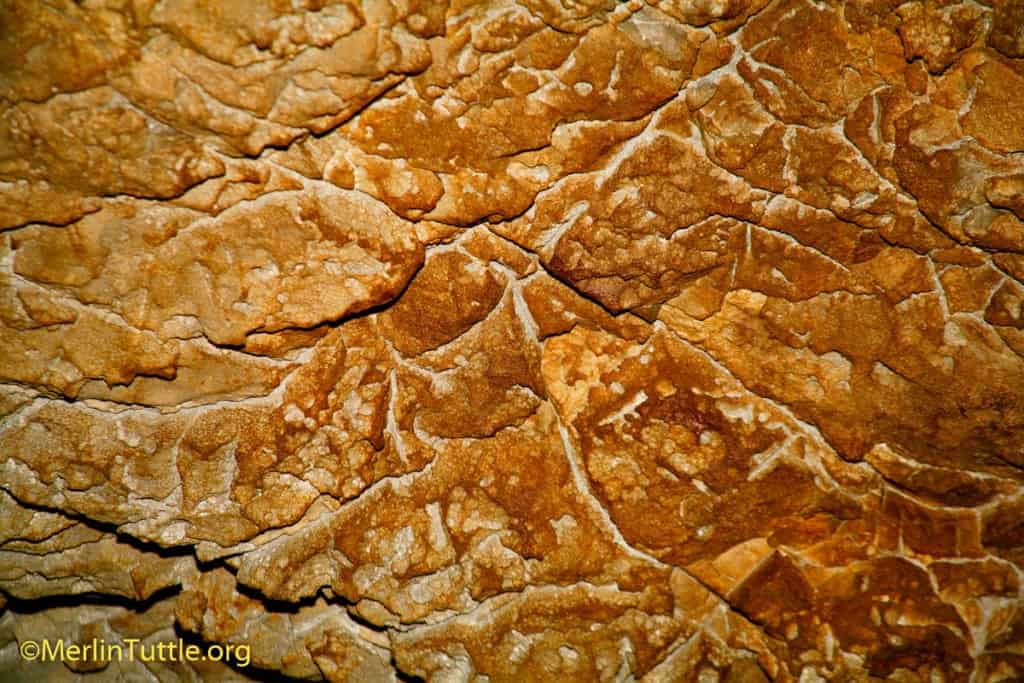
Throughout mid-latitudes, where a large proportion of North America’s caves are located, fewer than 10 percent are important for either hibernation or nursery purposes. However, at extreme northern or southern latitudes, large proportions of caves may be important for bats in winter or summer only. A few also may be important as migratory stopover sites.
The largest, most complex caves, with the largest (especially multi-level) entrances have traditionally sheltered the biggest and most diverse bat populations, mostly because they provide the widest range of temperatures, especially important during times of climate change. Any mid-latitude cave that traps and holds large volumes of exceptionally cold or warm air likely has been critically important for bats in the past. Large volume also means improved survival due to less unpredictable fluctuation. When bats are no longer using such caves, it is normally due to human disturbance or changes that have altered air flow unfavorably.
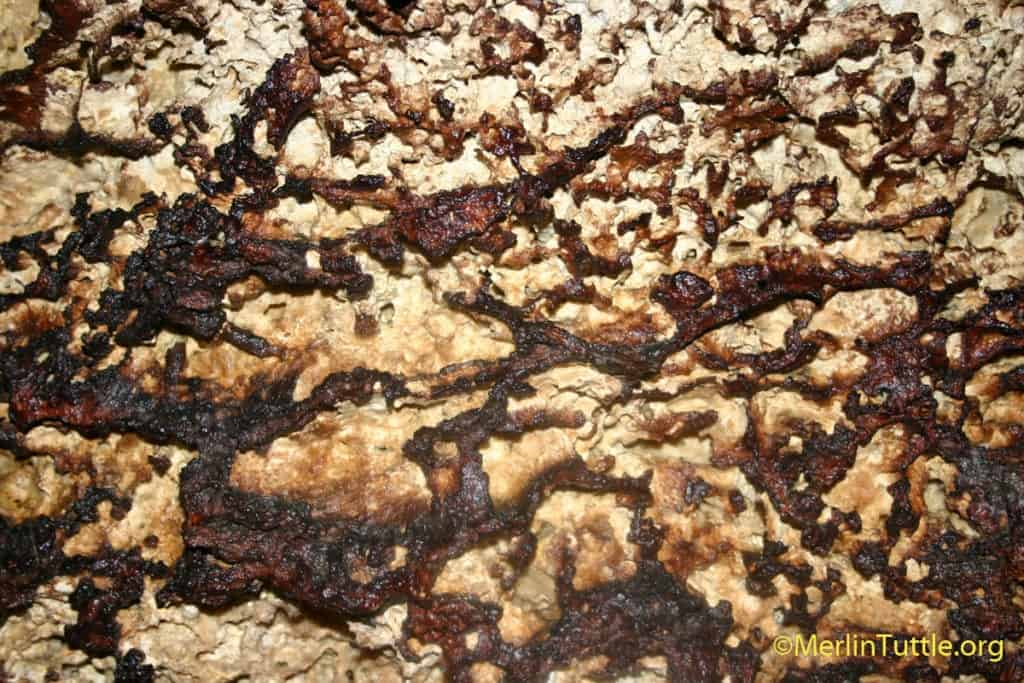
In a large proportion of caves, past use can remain clearly visible for hundreds of years after bats have been extirpated. Most limestone is light in color and is typically stained a rusty reddish color by prolonged bat use. With a little experience bat roost stains are typically easy to recognize. Caves where limestone is too hard or soft for leaving long-lasting stains are rare in North America. Old guano deposits, if not completely obscured by human traffic, may prove additionally useful.
By measuring areas of bat-stained limestone it is possible to make ballpark estimates of past population sizes. Most cave-roosting bats of North America cluster at densities of roughly 200 or more bats per square foot, so by measuring the approximate area of staining, and conservatively multiplying the area times 200, one can gain rough estimates of past population sizes. Certainly, when hundreds, or thousands of square feet are stained, that would indicate a past mother-lode roost for bats.
Even when no bats remain in such a cave, large populations often can be rebuilt if protected from disturbance, and human alterations to air flow are remedied. Cavers are typically the first to discover and report such evidence and already have proven invaluable in restoring some of America’s largest bat populations. This is a time when such cooperation is especially important, potentially contributing greatly to the recovery of cave-dwelling species.
It is tempting to point out that in North America’s richest cave areas, most caves are unused by bats, and that those used are normally occupied only in summer or winter. Unfortunately, it is the largest, most complex caves that are often the most sought after by both bats and cavers. Nevertheless, when wise managers and cavers cooperate, they will often find that even in these complex caves, bats only need relatively small proportions in any given season, and that parts can remain open to responsible caving during specific times or even year-round.
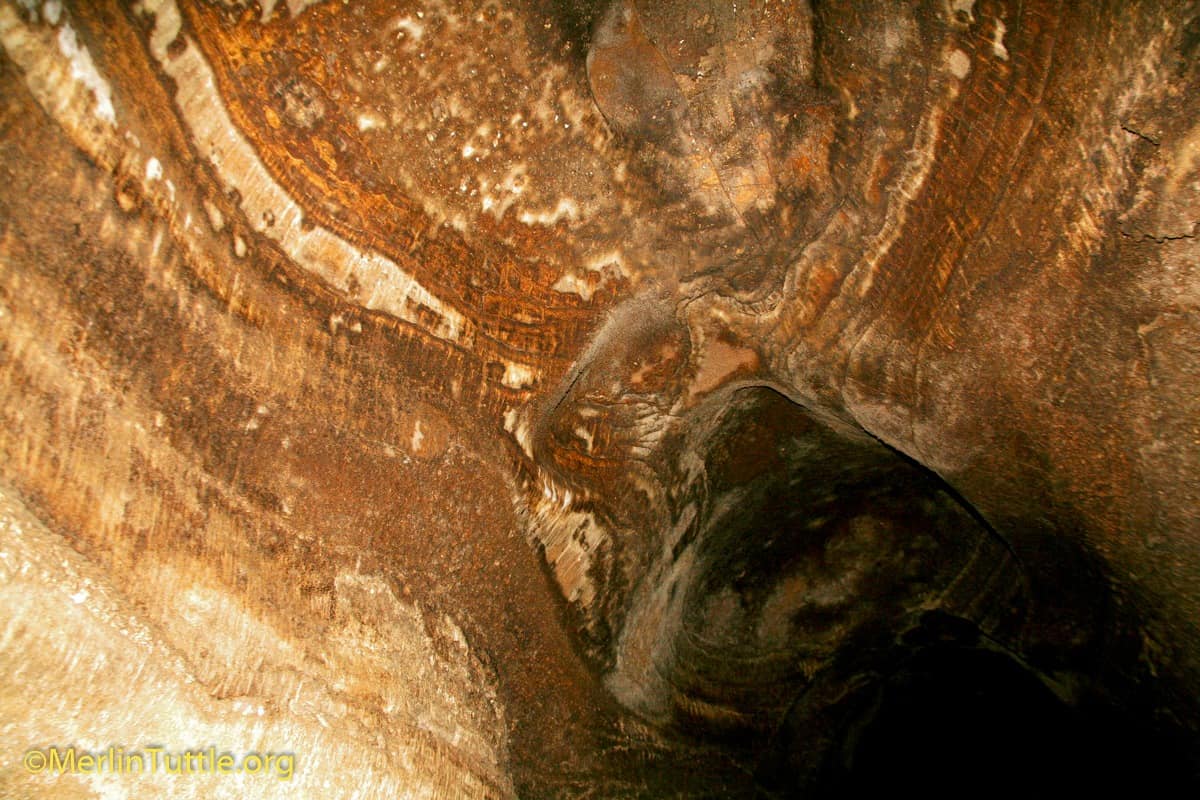
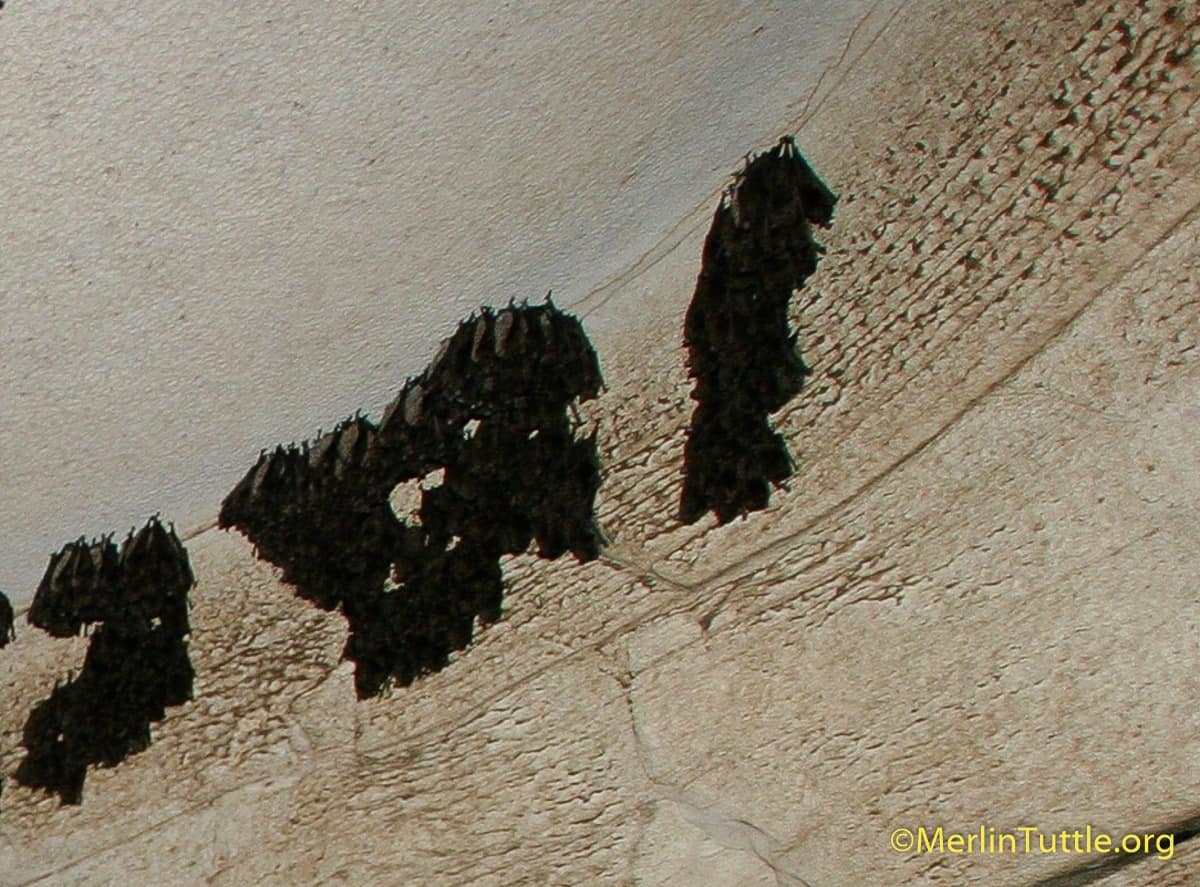
For example, the famous Fern Cave in northern Alabama includes miles of passages critical to hibernating bats as well as miles of passages of extraordinary interest to cavers but not to bats. For more than 20 years, responsible members of the Huntsville Grotto of the National Speleological Society played a critical management role through a cooperative agreement. As site managers, they regulated access in a manner very helpful to responsible cavers, to more than a million hibernating bats and to the U.S. Fish and Wildlife Service (the owner responsible for its protection).
The agency lacked the manpower and resources necessary to provide adequate protection for this remote property, so were happy to have onsite help from the Huntsville Grotto. Organized cavers were present year-round in the parts unused by bats, and near enough to check the entrance to hibernation areas for possible vandals or other problems. They also were able to use the bat area during the bats’ summer absence. Cavers provided the eyes and ears the Service lacked and did an exemplary job of ensuring that only authorized, supervised entry occurred.
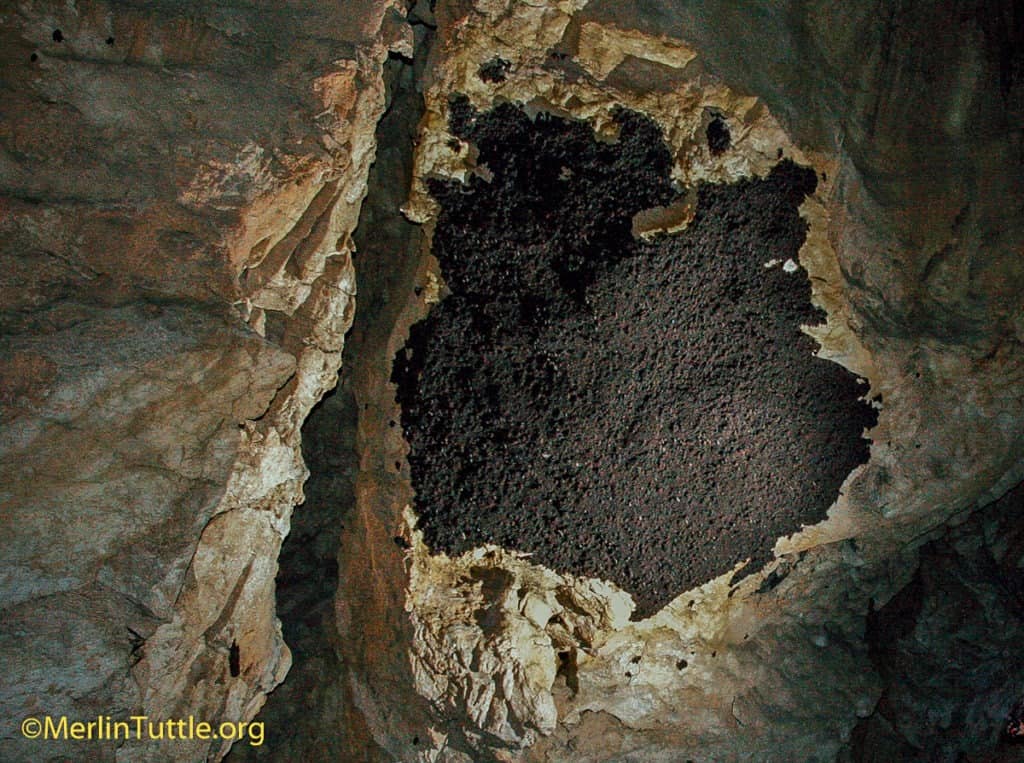
Love our content? Support us by sharing it!
“Just like the old days, eh Heather?” Kent softly clicks his tally counter as he sits in his folding chair on the other side of
An important new study, recently published in Science and widely covered by major newspapers like The Guardian, The Washington Post, and The New York Times, has
Mirror Mirror on the Wall, who’s the Thirstiest of Them All? Water is nature’s mirror. However, rather than reflecting back, when horizontal sound hits the
On March 6, 2024, the Wall Street Journal presented findings from the University of Leeds in their opinion piece, “Why Scientists Love Chasing Bats; The
2024 © Merlin Tuttle’s Bat Conservation. All rights reserved.
Madelline Mathis has a degree in environmental studies from Rollins College and a passion for wildlife conservation. She is an outstanding nature photographer who has worked extensively with Merlin and other MTBC staff studying and photographing bats in Mozambique, Cuba, Costa Rica, and Texas. Following college graduation, she was employed as an environmental specialist for the Florida Department of Environmental Protection. She subsequently founded the Florida chapter of the International DarkSky Association and currently serves on the board of DarkSky Texas. She also serves on the board of Houston Wilderness and was appointed to the Austin Water Resource Community Planning Task Force.
Michael Lazari Karapetian has over twenty years of investment management experience. He has a degree in business management, is a certified NBA agent, and gained early experience as a money manager for the Bank of America where he established model portfolios for high-net-worth clients. In 2003 he founded Lazari Capital Management, Inc. and Lazari Asset Management, Inc. He is President and CIO of both and manages over a half a billion in assets. In his personal time he champions philanthropic causes. He serves on the board of Moravian College and has a strong affinity for wildlife, both funding and volunteering on behalf of endangered species.